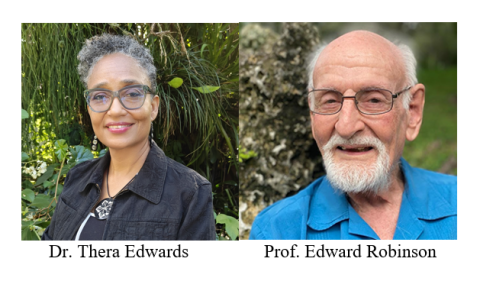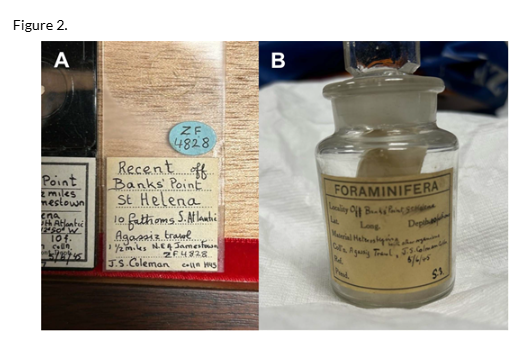

A recently published article, “Note on the Provenance of the Neotype of Heterostegina depressa D’orbigny 1826 (Foraminifera)” authored by Dr. Thera Edwards and Emeritus Professor Edward Robinson, Department of Geography and Geology, Faculty of Science and Technology, The University of the West Indies, Mona provided a brief comment on the provenance of the original type material and subsequent neotypes of Hesterostegina depressa after the type material went missing. It is of significance as H. depressa is the type for the genus Heterostegina, a group of considerable biostratigraphic importance. Biostratigraphy is a branch of geology that uses fossils to determine the relative ages of rock layers and to correlate rock formations across different locations. It essentially involves using the fossil content of rocks to understand the sequence of geological events and the relative time periods in which they occurred to provide a framework for understanding the history of life on Earth and the geological events that have shaped our planet.
The remarks presented in the paper are intended to provide a background for the very basic description of the original locality of the lost types of the larger benthic foraminifer Heterostegina depressa d’Orbigny 1826, and to clarify the minor confusion surrounding the derivation of the source material used to establish the neotype of the species, which is the type for the genus Heterostegina d’Orbigny. The fossil representatives of the group are of significant biostratigraphic importance from the late Eocene to the Quaternary (Banner & Hodgkinson, 1991; Less et al., 2008; Torres-Silva et al., 2017; Mitchell et al., 2022). Further study of the St. Helena material at the NHM to identify the few disc-shaped foraminifera recorded by Colman is warranted to verify possible sources of dispersal, considering the reported lack of coral reef environments and remote location of St Helena.
The neotype was collected from 18 m (10 fathoms) depth as cited by Banner & Hodgkinson (1991) and shown in Figure 2.

A) One of the hypotype slides, ZF4828, of H. depressa, showing the spelling as Coleman. B) Image of the foraminiferal sample jar with Colman spelled correctly.
This depth is shallower than the three depths of Kouyoumontzakis and may account for the absence of H. depressa in his samples. The apparent rarity of the species and fresh-looking appearance of the neotype is what might be expected from a comparatively recent arrival of H. depressa to the island’s shores. Access paper at https://doi.org/10.61551/gsjfr.55.2.233.
Reference: Thera Edwards, Edward Robinson; NOTE ON THE PROVENANCE OF THE NEOTYPE OF HETEROSTEGINA DEPRESSA D’ORBIGNY (FORAMINIFERA). Journal of Foraminiferal Research 2025;; 55 (2): 233–236. doi: https://doi.org/10.61551/gsjfr.55.2.233.
Published on 17 Jun, 2025